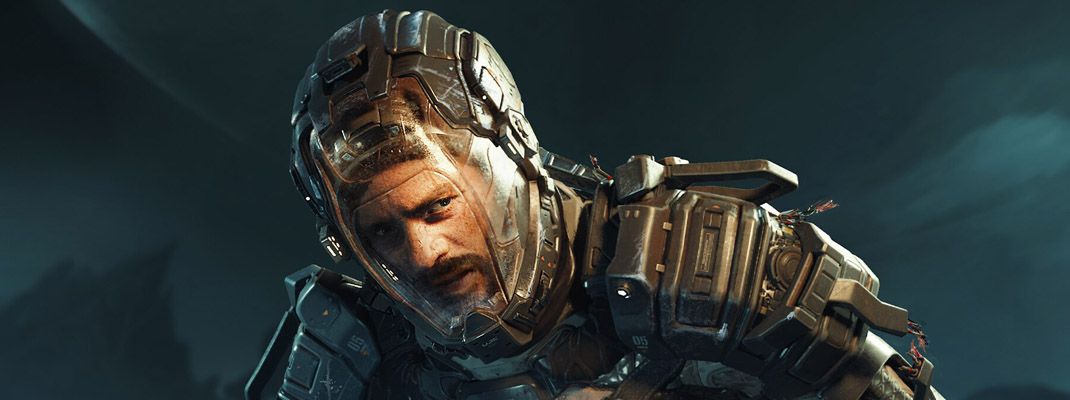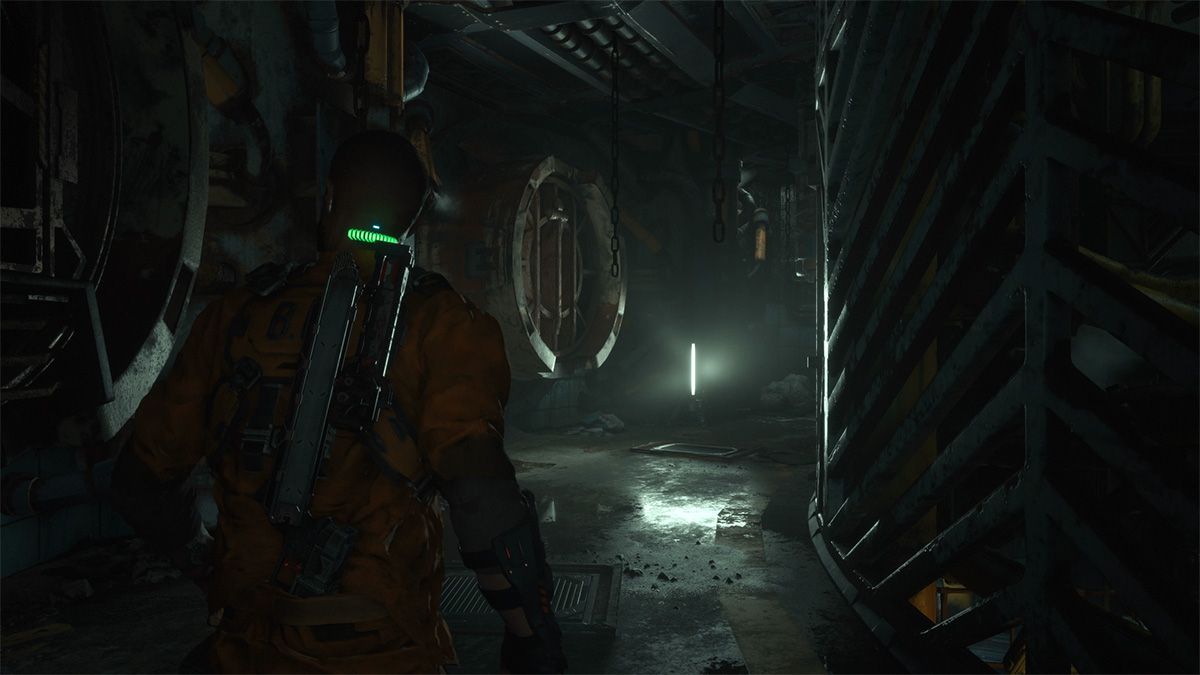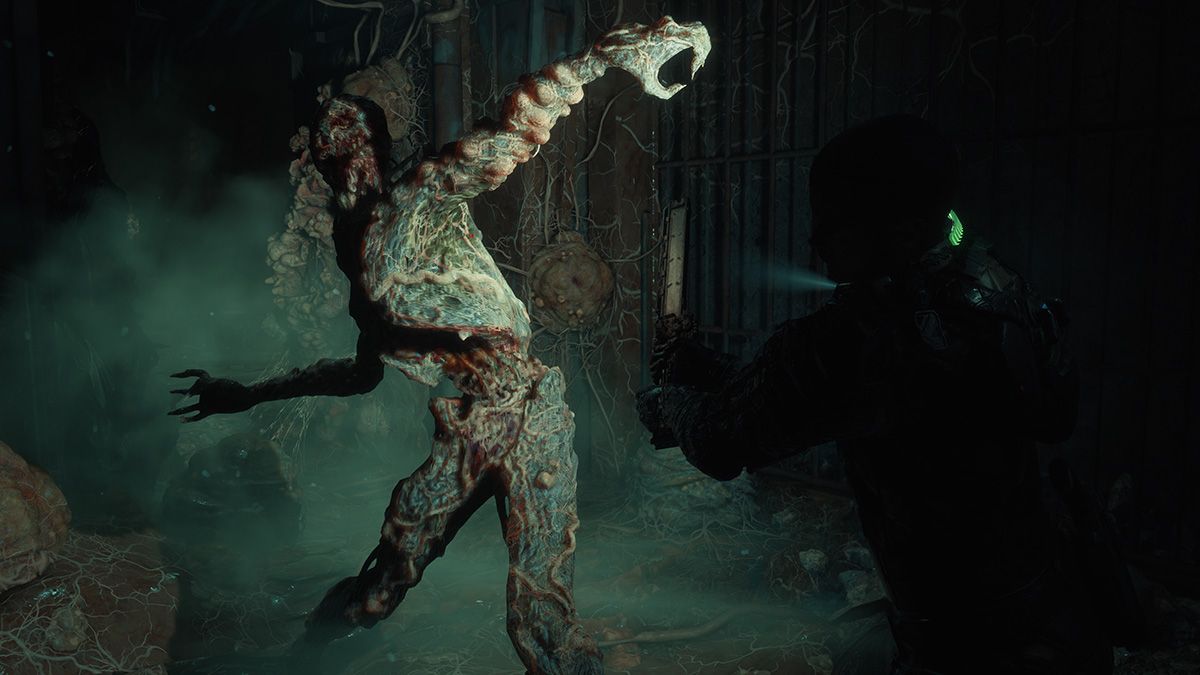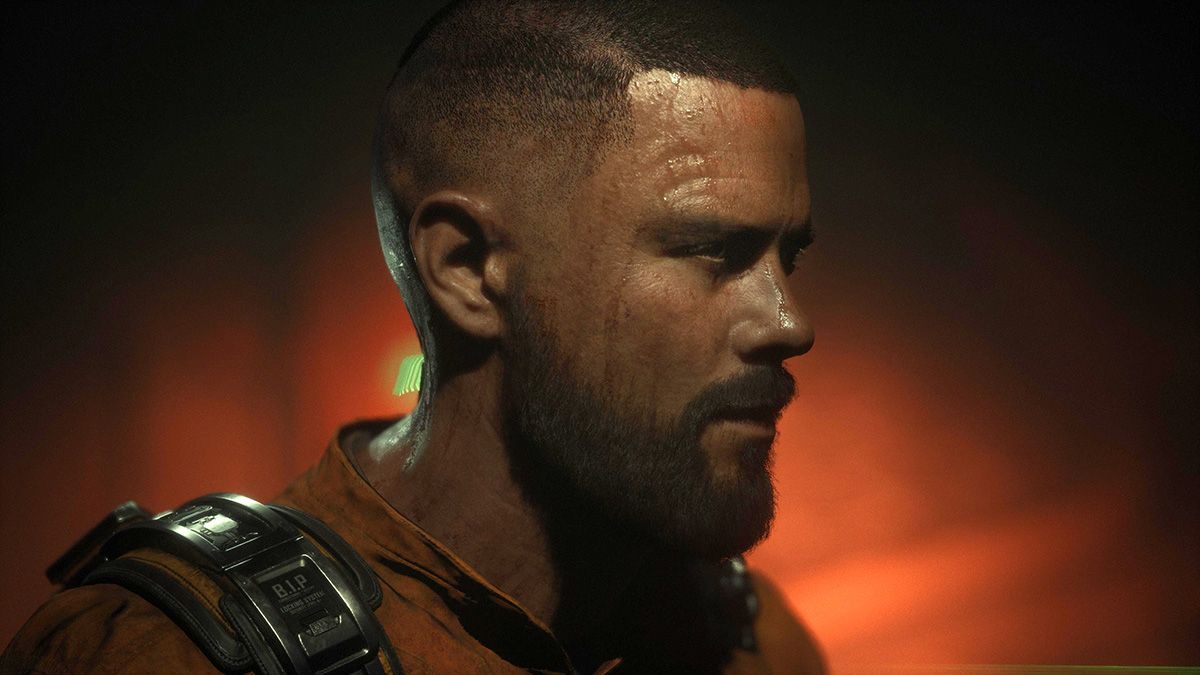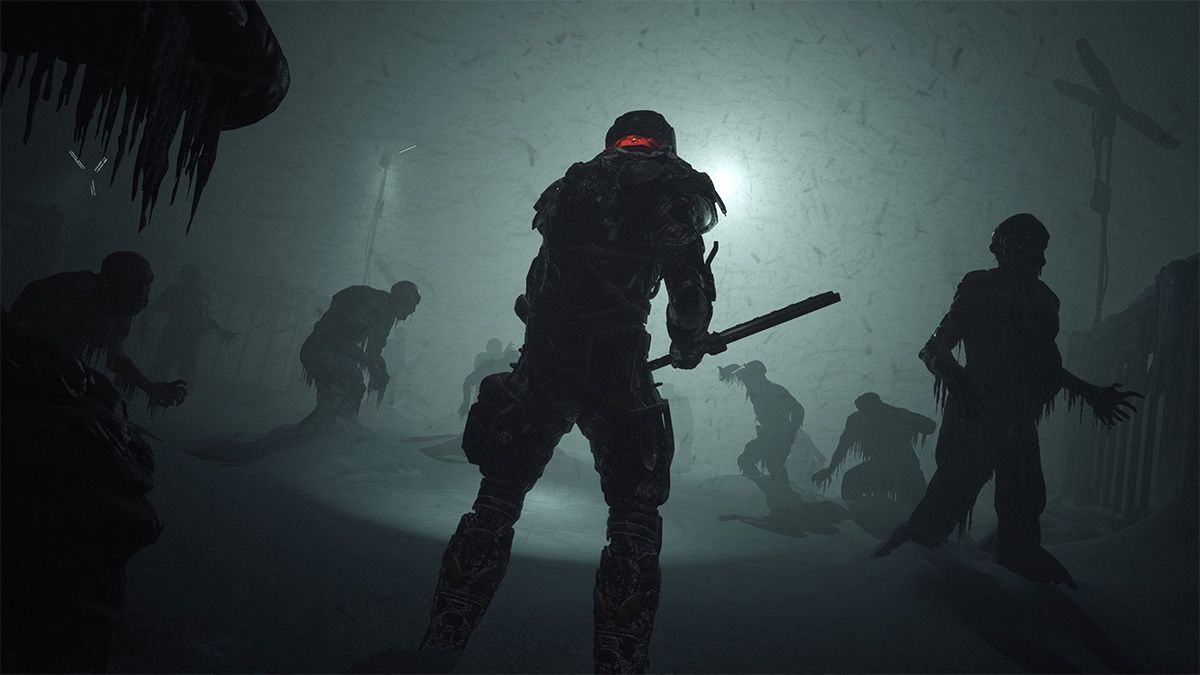The moment the credits finally began to scroll on one's time invested, my mind instinctively began plucking out one idiom after another in an attempt to surmise feelings felt on The Callisto Protocol. All of which, it has to be said, bereft of anything denoting positive connotations: wanting to have its cake and eat it too; wide as an ocean, deep as a puddle; beauty is skin deep. Above all else, however, the main takeaway from this eight to ten hour, single player, one-and-done trek, is that of conflict. That what Striking Distance Studios have crafted in their debut run is torn between two extremes and knowingly so. A game that as noted brief in its run-time but makes painstaking effort to pad its run-time as much as frustratingly possible. A game that for all the implications on scope a tale set in the shadow of Jupiter -- on the titular moon of Callisto -- might offer feels by far one of the most shallow and empty of experiences in a long while.
And perhaps most frustrating of all: a game, created in part by veterans of the same team that brought us Dead Space all those years ago, that feels content on never committing to one underlining vision. Reliance on the nostalgia of Visceral Games' creation (but hopefully building on such foundation) or instead remaining adamant that it is its own unique vision with the pitch and the gameplay premise to match. Debates on just how close or perhaps carbon-copy a game this may be to the series it's so blatantly evoking (and arguably leaning too heavily on) is sure to continue. But had it ended there -- if the only shortcomings of The Callisto Protocol were that it felt too much like a hypothetical Dead Space 4 in everything but name only -- the feeling would've been subdued, but peppered with the knowledge that what Striking Distance have established is a promising foundation.
Being brutally honest, I can't even say that after playing through The Callisto Protocol that they've even managed that. Outside of one key component via its technical graphics; to add insult to injury, what may well be the best showcase of graphical prowess this year bar none. Offering nothing less than an impressive use of facial capture, lighting and textural detail across the board. Even on PS5 with the niceties of ray-tracing and such disabled for higher frame-rate. If there's one department of Striking Distance that can come away from this with their heads held high, it's the team responsible for the visuals and the manner in which such surroundings have been realized from a fidelity and rendering standpoint. But sadly this is pretty much where the positives both start and end for The Callisto Protocol. Where most better-than-average games are often commendable products hampered by one or two failings, here the result feels inverted: one department of Striking Distance hunkered down by the weight of an end product that is shallow, unsure of itself and for large stretches, a pain to get through. Yet it's that uncertainty that stands as the most critical point to flag up. How despite such visual pedigree, Striking Distance Studios' debut outing doesn't know what it wants to be -- an ode to what came before or the start of something new. Thus, through that uncertainty and contradiction alike, the experience put forth suffers from the very start and unfortunately fails to recover itself from thereon.
If nothing else, the road (and an extremely linear-looking and linear-feeling road at that) is at least peppered by that aforementioned care in its visuals. While The Callisto Protocol may not be the most original when it comes to rendering that staple sci-fi, groggy-industrial premise, you can tell that the care and attention to every inch of its blood-stained, dirt-covered environments is present. Even the finer points, those especially that don't stick around for too long, are commendable. A segment that has you wading through a water treatment facility to find the way the filth and the grime sticks to main protagonist Jacob Lee's uniform. Accompanied too by sound design that makes great use of 3D audio to make it apparent you're not exactly alone in these cramped, dimly-lit halls and interiors. There's an argument to be made that few, if any, of the locales stay long in the memory as you tentatively move from one region to the next. The Callisto Protocol makes its linearity be felt and that does in a way hamper the lasting impact its overall artistic direction makes painstaking efforts to implant. But in a vacuum, you can't fault both the detail and complexity to which these interiors are orchestrated, even if the accompanying level design can only fashion a few opportune diversions in the hopes of extra loot and a few audio logs on top.
Point is, the USG Ishimura and/or Titan's Sprawl respectively, the moon of Callisto is not. Few times, if at all, do you find yourself pushing past the obvious linearity of its progression and sequence of set-pieces in convincing yourself these are believable and lived-in surroundings. It may seem like low-hanging fruit to draw comparisons with the original Dead Space and its equally-enjoyable sequel, but to reiterate: The Callisto Protocol both wants and doesn't want those comparisons to be drawn. It hopes you remember the tension-fueled, dread-soaked highs of both those games -- in an attempt to mask its own likely shortcomings -- and yet is so sure that what new ideas it brings will be enough to see it through. This contradictory design is most prevalent in the gameplay and specifically the means by which combat is applied. While guns still mark a presence here, limited as they are to ballistic weapons in the form of two side-arms, two shotguns and an assault rifle, Callisto's focus lies with its melee equivalent. How the game encourages the use of your stun baton to whack enemies to a bloody, limb-deprived pulp. All while dodging the incoming strike, made possible by a consecutive series of left and right shifts of the analog stick. Or rather: tries to make possible. The first problem with this set-up is that because Callisto maintains that familiar third-person, behind-the-player camera, identifying how an enemy is going to attack -- and in the case of a group of foes, which enemy -- can become harder than it should be due to both the default perspective and worse, how erratic the camera can get in the more tighter spaces.
Made worse by the fact that the mechanics of dodging in of themselves are woefully inconsistent. As much as the game is adamant that a left-right-left combo is the key to surviving, there are ample instances where an assumable successful dodge is anything but. How enemy strikes can still incur damage despite guessing both direction and timing alike correctly. Bad enough that this can happen against one enemy in a simple-enough one-on-one dual of sorts. When a situation arises where you're surrounded by more than one enemy, the problems grow exponentially. And not just on the basis that enemies can attack you off-screen with no means to counter it, but the bizarre lack of a lock-on or targeting system -- that would at least let the player decide which enemy to focus on -- means the game is left to guess for itself and then dictate to you which direction your swings will go. And that's even without going into much detail pertaining to the game's own indecisiveness on how it seemingly chains or queues presumed combos. If, for example, dodging to the left for one enemy, means you have to dodge the opposite way for another foe.
Little of the more intricate elements of the combat mechanics make sense, but it results in even more damaging a response when you factor in the late-game bosses -- one of which is laughably regurgitated an additional three times thereafter -- that incur instant-death strikes, requiring you to restart said encounter from the very start. Couple the inconsistent back-end logic, the overall lack of meaningful depth and the frustration that dealing with specific enemies can bring and it becomes clear that Callisto's melee-focused efforts are a bizarrely-odd fit that doesn't gel with combat's other more familiar elements. If only the game's other meaningful investments incurred as odd a reaction. Sadly, when it comes to both the story and the characters that populate the events of The Callisto Protocol, the only response one can usher is a rolling of the eyes. With how one-dimensional its characters are written -- doubly so for its antagonists who are either woefully superficial or predictably one-note in their cliched villainy. While not the most complex or fleshed -ut of protagonists, by the end of Dead Space 2, Isaac Clarke was a character in his own right, detached from that of the player. Someone with his own struggle and intentions to put an end to what was happening in that game.
You can't say the same with someone like Jacob Lee who is essentially little more than a cipher for the player. Despite the game's trying to shoe-horn a last ditch attempt of sympathy late on. More annoyingly, after going so far as to making me actively dislike a secondary character, having the gall to then center proceedings around saving said character, despite one's complete lack of care as to whether that character ended up alive or dead. That's not a knock against the main cast who, in their defense, do the best with what little material they're given. How, in the end, The Callisto Protocol runs the same tired tropes and formulaic ratcheting-up of stakes. Resulting in a climax that feels anything but -- rather the game just comes to grinding halt and calls it a day. You'll get no prizes for guessing early (and correctly in all likelihood) how the narrative eventually unravels. Capped off, in that same climax, with references to discount-Illuminati types and a sequel bait The Callisto Protocol is nowhere near deserving of. Not least, as if perfectly encapsulating that contradictory nature of previous, because the game closes with its literal final scene doing the exact same thing the original Dead Space pulled off. No spoilers, but for those who've played it, you'll know what that's in reference to.
There's just so much lacking by way of memorable moments or deviations away from the regular trudge through infested interiors and environments for the game to feel anything but a blur. There are no segments in the vacuum of space, no puzzle-solving, no zero-gravity shake-ups to how levels are traversed. No genuine tension like Dead Space 2's infamous needle-in-the-eye moment. I hate to keep bringing up comparisons to Dead Space, but it's only because Callisto seems to want to remind you of said series time after time, that you feel those comparisons are not only warranted, but inevitable. In all its attempts to instill that same level of discomfort and anxiety in the horror of its scenarios, its overuse of jump-scares -- to the point you can, as expected, guess and guess correctly when the jumps are going to come -- may arguably be the game's biggest crime. It isn't a scary game by any measure, but when the dread of coming up against mutated monstrosities devolves into a conveyor belt of spamming attacks on the same, limited enemy types for the hundredth time, gameplay not only becomes nuance-devoid routine, but frustratingly mundane on top.
Closing Comments:
Confused, contradictory and all too reliant on what came before, fantastic visuals that may stand as one of the current-gen's best can't save what's a terribly underwhelming release with The Callisto Protocol. A game that tries so desperately to be acknowledged for its own identity, all while relying on its most blatant and obvious of call-backs. It wouldn't be as bad if Striking Distance had picked one of the two intentions and committed, but it's this indecisiveness that is but the start of an experience, despite its short length and little replayability, you'll desperately want to see the back of. Due in part to its unoriginal and tired tale, but more so its far from fleshed-out combat loop that seemingly goes out of its way to make one's experience as frustrating and as unruly to get through as humanly possible. One of the best-looking releases of the past few years from a technical and artistic standpoint, so heavily undermined by everything else surrounding it, The Callisto Protocol caps off 2022 with a release devoid in substance and all the more disappointing because of it.
The Callisto Protocol
Reviewed on PlayStation 5
- Platform(s)
- PC , PS4 , PS5 , Xbox One , Xbox Series S , Xbox Series X
- Released
- December 2, 2022
- Developer(s)
- Striking Distance Studios
- Publisher(s)
- Krafton
- Genre(s)
- Survival Horror
- ESRB
- M for Mature: Blood and Gore, Intense Violence, Strong Language
- How Long To Beat
- 10 Hours

